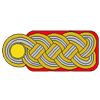So, I have some cast hull tanks I'm preparing to build, and want to simulate the roughness of cast armor. Below are four Armorama threads on the subject.
Here are two of my attempts. Trying to avoid using and stippling liquid glue, I used different products on the side armor and the lower hull. I look forward to your thoughts.
.jpg)
.jpg)
.jpg)
.jpg)
Which one do you think looks best? Do either look good?

https://armorama.kitmaker.net/forums/253302
https://armorama.kitmaker.net/forums/184312&page=1
https://armorama.kitmaker.net/forums/87931&page=1&ord=1
http://armorama.com/forums/187454


































